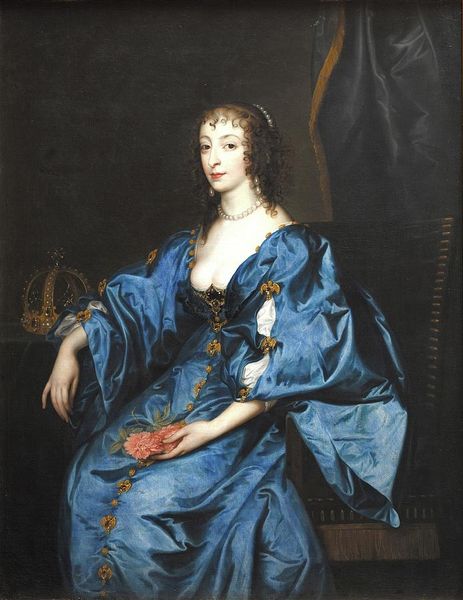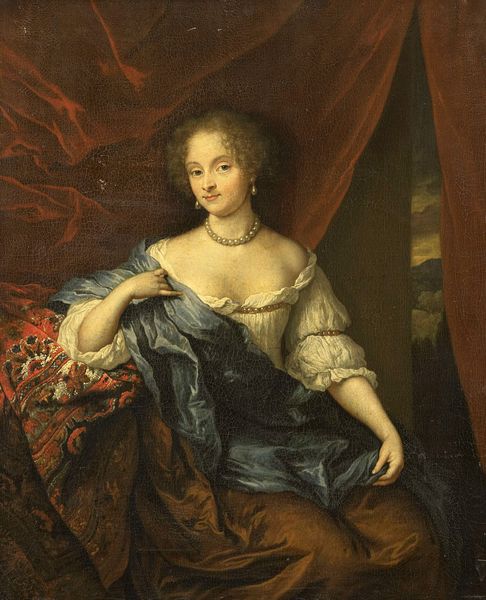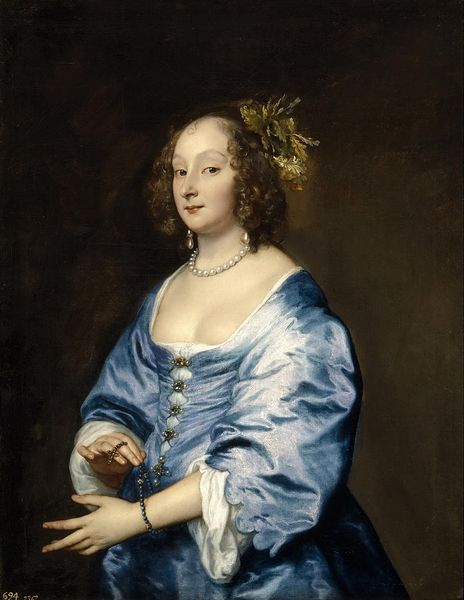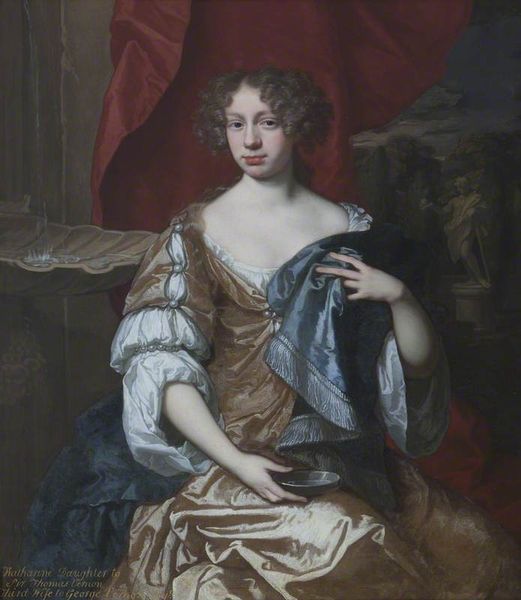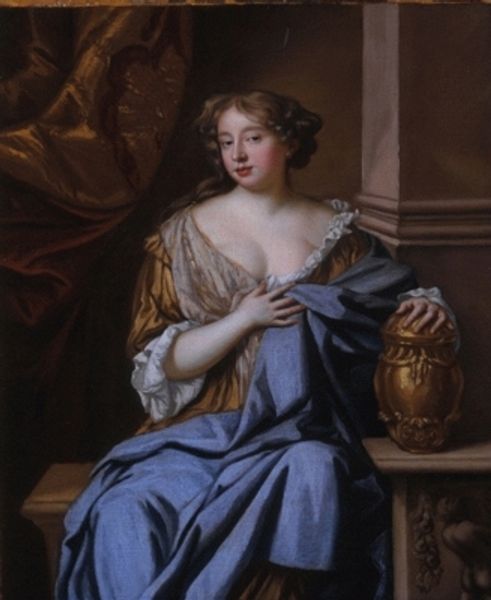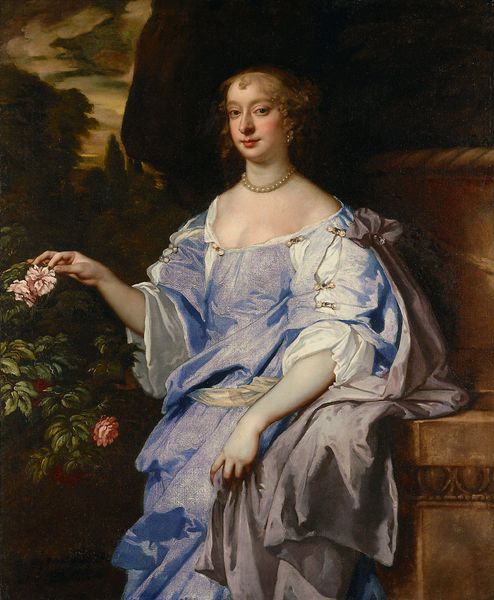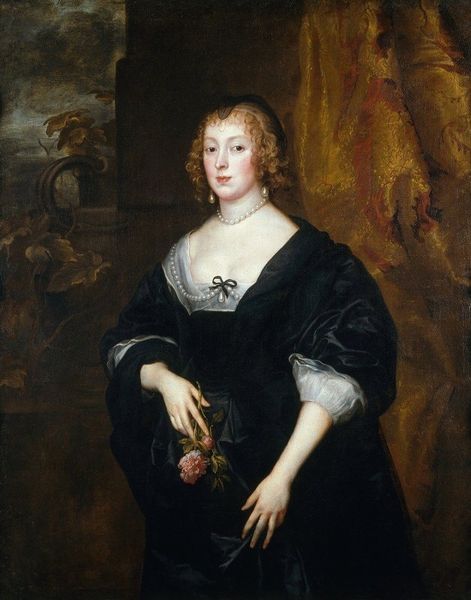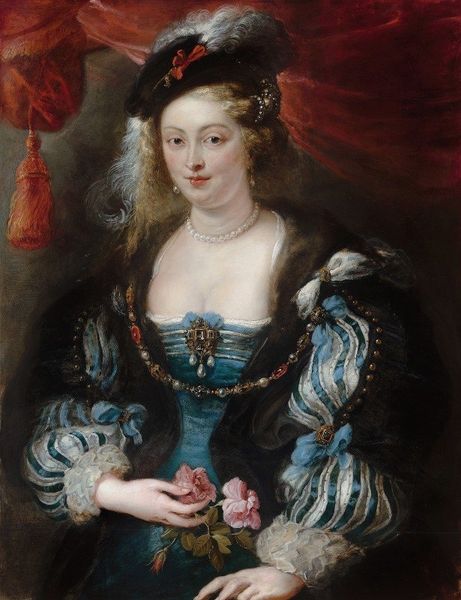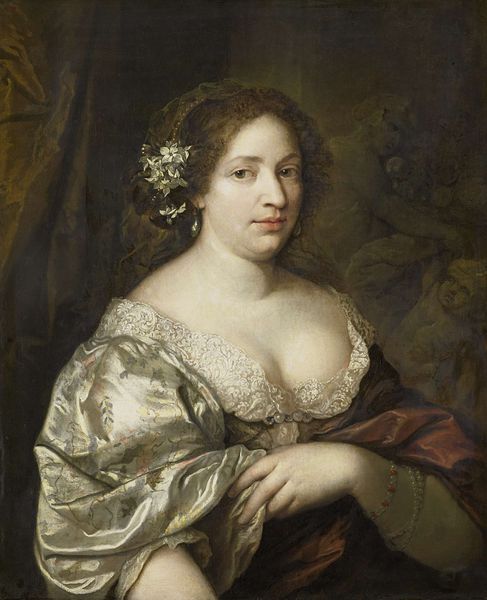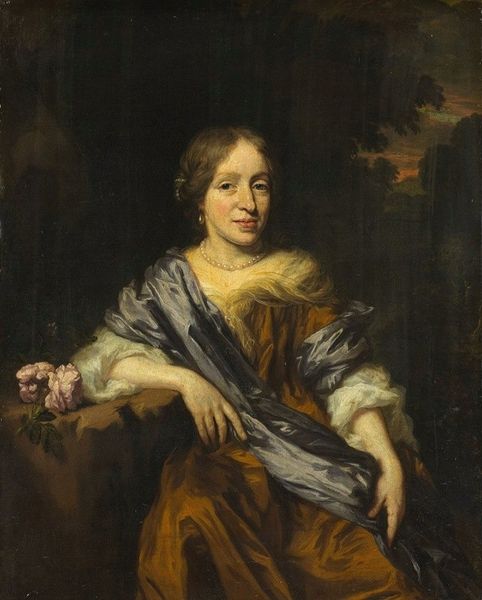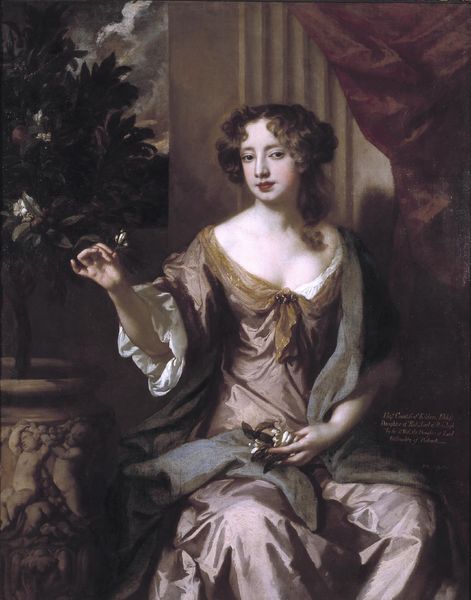
Portrait of Helena Ctaharina de Witte 91661-95), wife of Iman mogge, lord of Haamstede 1678
0:00
0:00
oil-paint
#
dutch-golden-age
#
oil-paint
#
genre-painting
Dimensions: height 49 cm, width 40 cm, depth 9 cm
Copyright: Rijks Museum: Open Domain
Curator: Let’s turn our attention to a portrait by Caspar Netscher, a Dutch Golden Age painter. This is a likeness from 1678 of Helena Catharina de Witte, wife of Iman Mogge, lord of Haamstede. Editor: My immediate response is that this portrait is dominated by blue—the richness of the blues and golds lend an air of regal composure. I feel invited to reflect on an older era. Curator: And Netscher's masterful handling of color and texture indeed demands a closer inspection. Helena, a woman of obvious stature, is captured amidst signifiers of wealth. Consider the interplay of light on her satin gown, for instance. How might we read this, not merely as a celebration of prosperity, but also through a lens of gender and power dynamics of the era? Editor: Well, notice the pearl necklace. Pearls symbolize purity and status, and in this period were associated with marriage, yet their subtle gleam against her skin suggests more than just decorous virtue. The lion-head fountain, as well, it can symbolize both strength and control over natural forces. Do you think its inclusion here attempts to speak about female agency during a male-dominated era? Curator: Possibly. Though, looking at the larger scope, the socio-economic reality was that women’s power, regardless of status, often played out within domestic confines or familial alliances. A woman's role during that period was primarily defined by her marital status and ability to produce heirs to ensure dynastic continuation. This may have served as a means to maintain existing power structures. Editor: You raise such a valid point about these social frameworks. Still, the composition, framing her with the romantic, but partially shadowed landscape behind her and the hint of classical architecture beside, perhaps speaks about the cultural inheritance noble women had control over, if not outright economic power. They played an important role, too. Curator: That's a compelling point, especially considering the Dutch Republic's focus on commerce and emerging bourgeoisie. This portrait acts almost as an attempt to elevate bourgeois power with a classical style, mirroring aristocratic representation but within the mindset of its own emerging societal class. Editor: Thinking about this piece overall now, I think my earlier read was correct; Helena is elevated and strong, but constrained within the confines of accepted nobility. Curator: And from a materialist perspective, Netscher demonstrates how the display of fine fabrics becomes not just a means of defining wealth, but is indicative of how social identities were actively constructed during the Golden Age.
Comments
No comments
Be the first to comment and join the conversation on the ultimate creative platform.
